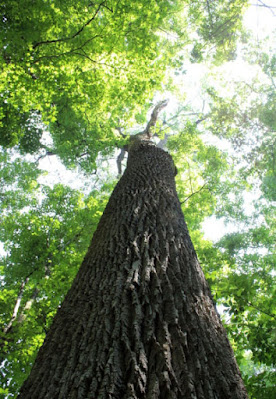 |
| Science magazine map; differing county density among states may misrepresent density of emerald ash borers |
 |
| Green Ash (Photo by Chris Evans, University of Illinois) |
"Finding them in the forest is like looking for a needle in the haystack," writes Carol Lea Spence of the University of Kentucky, where the Department of Forestry and Natural Resources is coordinating the project. But several have been found, and the Kentucky Division of Forestry is raising trees from their seeds. It will take years, as the trees grow, to make sure they inherit the resistance to the borer.
UK forestry professor Ellen Crocker and forest health technician Megan Buland want people to report any surviving trees in the woods through the TreeSnap app. "Researchers are looking for large, mature trees left among those that were killed by the invasive insect," Spence reports. "Seedlings that are springing up in the gaps left by dead ash are not eligible for the study, because once large enough, they too will most likely be susceptible to the borer." Crocker and Buland developed a virtual hunt for "lingering ash" and a video that can help you identify ash trees. North America has 16 species of ash; the mode widespread, the green ash, is the most threatened by the borer. Other species such as white ash are highly susceptible.
No comments:
Post a Comment